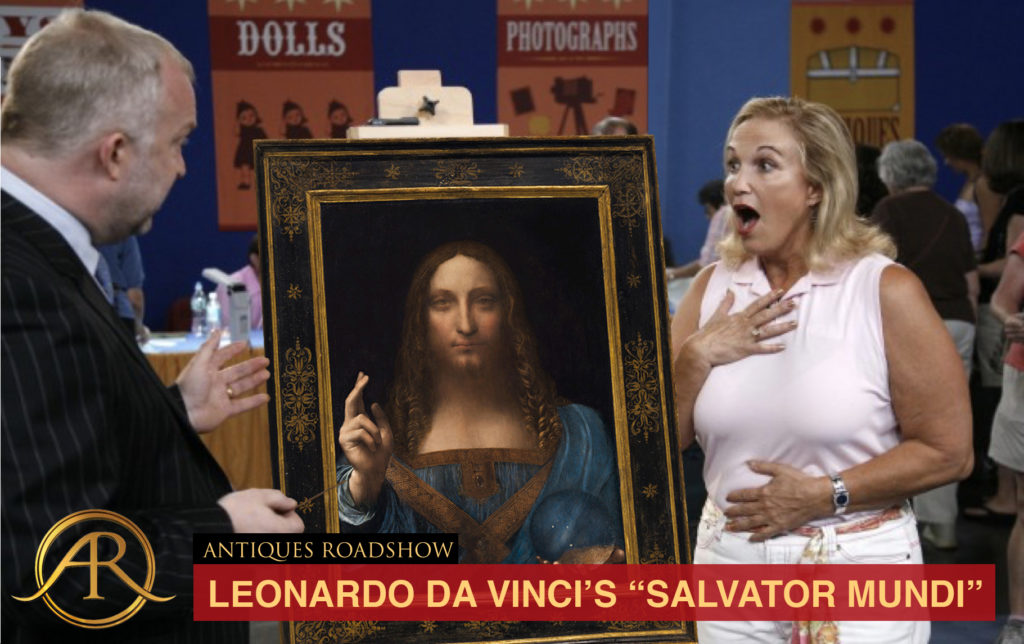Salvator Mundi (Savior of the World) ...
Priceless ! (that is: $400 million in worldly currency/ $$450,312,500 with fees added)
Worth every penny.
The picture, of a serene-looking Christ dressed in blue and holding an orb, is one of fewer than 20 works by Leonardo still in existence, and was one of only 10 in history to be sold at auction.------------------
...
Art dealer Philip Mould said, "“This is a very secular image of Christ. There’s no cross, there’s no halo, and also there’s something quite ambiguous about his appearance, a slightly gender fluid aspect to it that makes it very zeitgeisty."
“It is the face of today.”
ADDED: Best, is the backstory...
By Julia Zorthian ~ October 12, 2017
The final privately owned Leonardo da Vinci painting is captivating the art world ahead of its auction next month — but before people knew the artist, the portrait of Jesus was nearly lost.
When experts believed “Salvator Mundi” was painted by a da Vinci follower, it sold for only $60 at a Christie’s auction in 1958. But in 2007, conservator Dianne Dwyer Modestini removed layers of paint that had been added over the centuries and scholars confirmed that the work was actually a da Vinci original.
The renowned Renaissance master painted “Salvator Mundi,” which translates to “savior of the world,” around 1500 A.D., in the same era that he completed “The Mona Lisa.”----------------------------------
The painting once belonged to King Charles I of England, and later his son, Charles II in the 17th century. But after that, there were no record of its whereabouts between 1763 and 1900, according to Christie’s. The auction house called the painting’s discovery and restoration “the greatest artistic rediscovery of the 21st century.”
Another:
Its inclusion in the National Gallery’s landmark exhibition of 2011-12 — the most complete display of Leonardo’s rare surviving paintings ever held — came after more than six years of painstaking research and inquiry to document the painting’s authenticity. This process began shortly after the painting was discovered — heavily veiled with overpaints, long mistaken for a copy — in a small, regional auction in the United States.--------------------
The painting’s new owners moved forward with admirable care and deliberation in cleaning and restoring the painting, researching and thoroughly documenting it, and cautiously vetting its authenticity with the world’s leading authorities on the works and career of the Milanese master. Dianne Dwyer Modestini, the conservator who restored the work in 2007, recalls her excitement after removing the first layers of overpaint, when she began to recognise that the painting was by the master himself. ‘My hands were shaking,’ she says. ‘I went home and didn’t know if I was crazy.’
One of the most enduring and iconic images of Christ is the Salvator Mundi, or 'Savior of the World.' It depicts Christ with his right hand raised with crossed fingers while he holds an orb or globe in his left. The globe represents Earth, with Christ offering a benediction over it.
Salvator Mundi has been a great topic of discussion in recent years due to the re-discovery of a circa 1490 example by Leonardo da Vinci that had been lost. The earliest documented owner of the painting was King Charles I of England. After Charles's execution in 1649, however, records became muddled and the masterpiece's whereabouts unknown. That is, until it resurfaced just over a decade ago here in the United States.
After being examined by numerous art historians and specialists here in America, the work was sent to London, to be compared against Leonardo's Virgin of the Rocks in the National Gallery. The world's leading experts and scholars were invited for further study the work, including Martin Kemp of Oxford University.
Kemp said of the work "It had that kind of presence that Leonardos have ... that uncanny strangeness that the later Leonardo paintings manifest."



<< Home